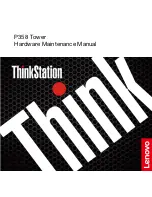
Manual Voice Server Anuncio © 2009-2014 Vidicode®
52
Possible actions are: Wait for a selection, Send the call to the PBX
(connected between the PBX and network) and Record a message.
If no action is defined for a message number the call is sent to the PBX
using the called number. For consistency there should always be an
action even if the default action is the one desired.
A timetable (or schedule) defines a whole week of actions. Each day of
the week within that table can be filled with times and message
numbers. It can also contain exception dates, such as public holidays
(New Year, Christmas, etc).
If no message number is entered for a certain time then the system looks
in the Attendant list for a second entry. The same phone number can
occur twice in the list. The order is important; the first entry must be the
timetable and the second must be with a message number.
A telephone number can be set to the message number "Off" meaning
no action is to be taken. This can be used to exclude phone numbers
when using wildcards below it in the list.
Special case 1:
Pressing * when entering the message number displays an exclamation
mark (!) in front of the number. In this case the attendant doesn't
process the call immediately and the call is passed directly to the PBX.
The attendant will "take back" the call if the called number is busy or
doesn't answer for some time. When the call is “taken back” the
message number behind the exclamation mark is used and started.
The same effect can be achieved using a direct connect transfer (see
below) without an audio file. Using this method the attendant first
interacts on an isdn-level.
Special case 2:
The telephone number "00000" (5 zeroes) invokes special processing for
numbers in the Attend list when there is no calling party number (no CLI
or the number has been withheld) for a call. The message number
specified is used instead of the associated message number.
Note
Note
Note
Note:
The length of the numbers in a list must be the same. A wildcard suffix
can be used (numbers with *) to provide the means to enter a common
part and then any trailing digit is accepted without entering each and
every instance. The lists are processed from top to bottom allowing
exceptions to wildcards to be placed higher in the list. For a called
















































